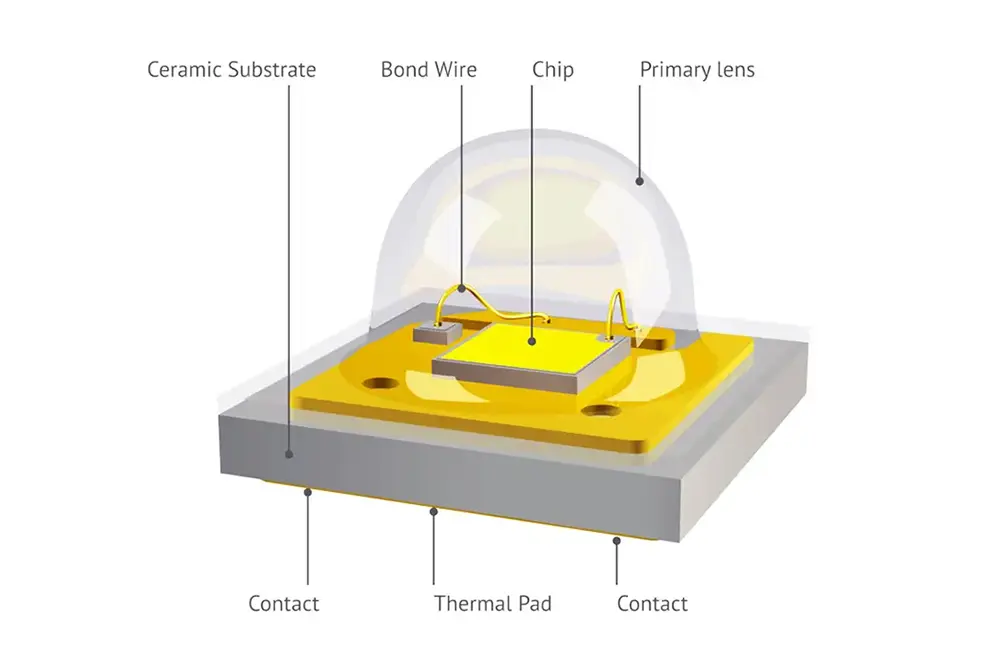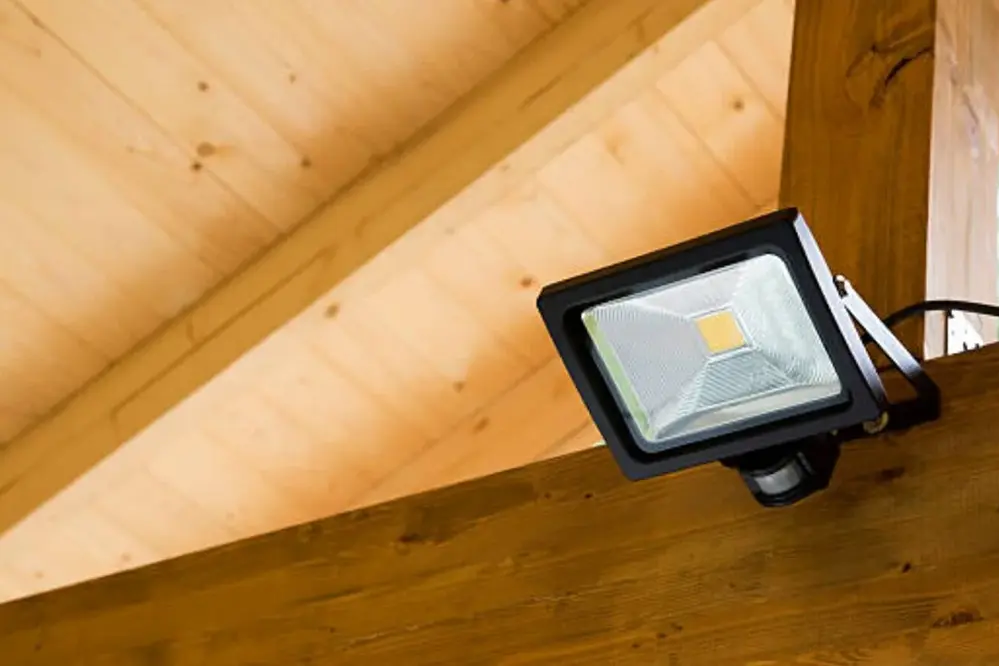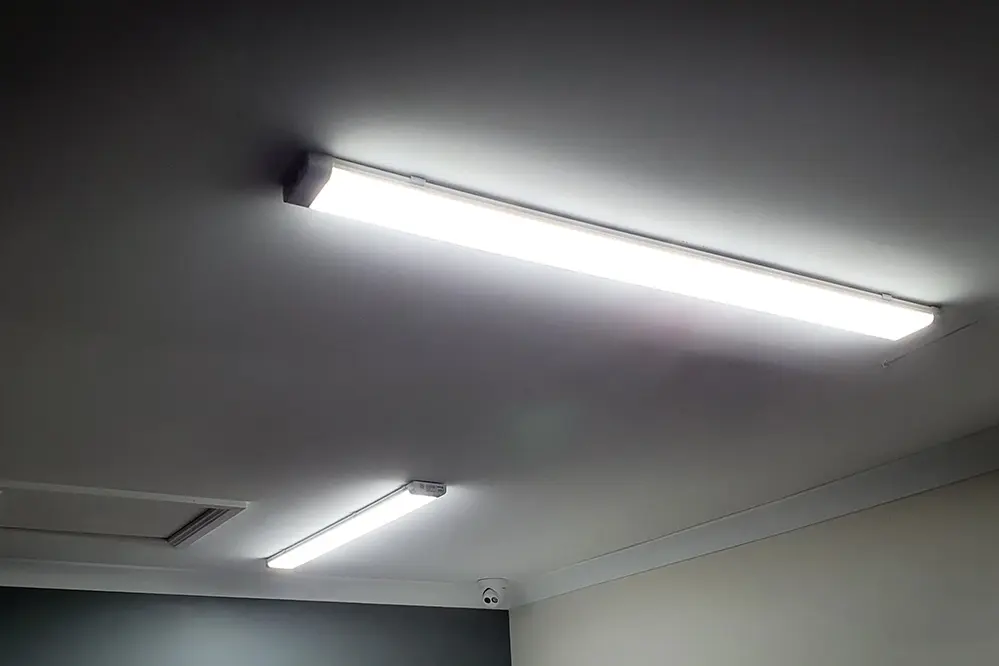Welcome to our comprehensive breakdown of LED Package Types. In this blog post, we will explore the intricacies of LED packaging, from polarity to gold wire classification. Understanding these types is essential for maximizing the potential of LEDs in various lighting applications. Whether you’re a lighting enthusiast or a professional in the field, join us as we delve into the world of LED Package Types and uncover the secrets behind their innovative design.
LEDs have revolutionized the way we illuminate our surroundings, and their packaging plays a crucial role in their performance. From understanding the polarity of LED lights to the classification of gold wires, we will take a closer look at the internal structures that make these tiny diodes shine so brightly. By mastering the different types of LED packages, you can unlock their full potential and create stunning lighting solutions that captivate and inspire.
Whether you’re looking to enhance your knowledge as a lighting enthusiast or seeking to optimize your professional lighting projects, this comprehensive breakdown of LED Package Types will provide you with the expertise and attention to detail you need. Join us on this illuminating journey as we unravel the mysteries behind LED packaging and empower you to create exceptional lighting experiences. Let’s embark on this enlightening adventure together.
Decoding LED Polarity Awareness
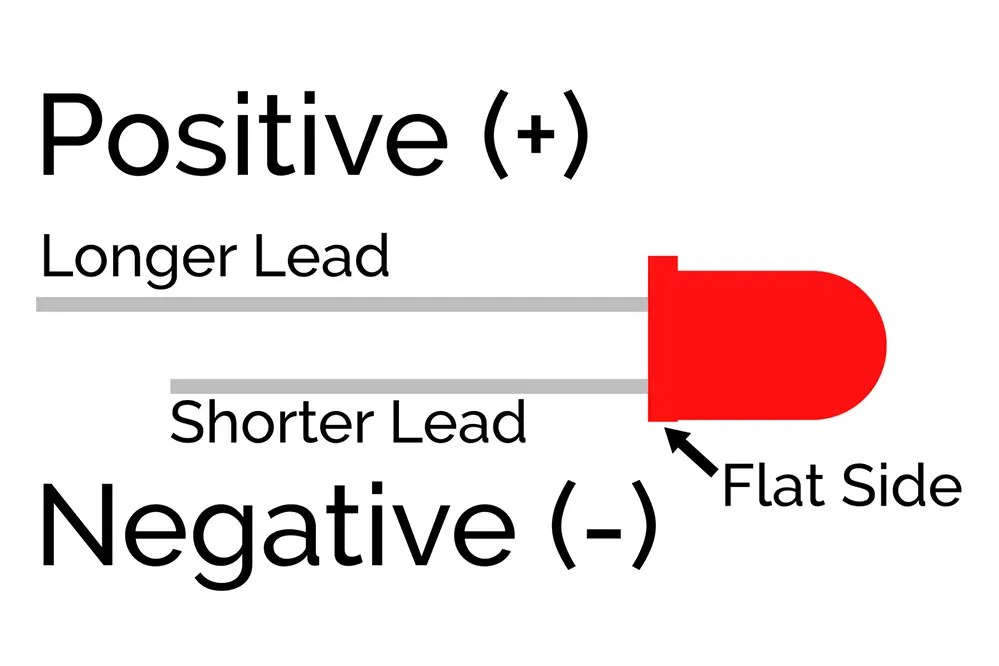
The polarity of an LED implicates the directionality of current flow within the device— a critical aspect not to be overlooked. LEDs encompass a positive (anode) and a negative (cathode) terminal, each conducting current in only one direction due to their diodic nature. Incorrectly connecting LEDs in a circuit will inhibit illumination, as the forward voltage necessary for light emission cannot be established. Therefore, discerning polarity is paramount for the functional deployment of LED technology, safeguarding against reversed connections that lead to non-operational units and potential damage.
Identifying Cathode and Anode Pins
LED package terminals are intuitively marked—often physically—to denote the anode and cathode pins requisite for appropriate electrical connections.
LED polarity is indispensable for functionality, acting as a gateway to correct electrical current flow and luminous performance.
When handling LEDs, the longer lead typically represents the anode, whereas the shorter lead corresponds to the cathode, guiding proper orientation in circuits. Affixed indicators may also denote polarity, aiding seamless integration.
Consequently, mistaken polarity during installation can result in a non-functional LED—recognizing and adhering to pin identification is therefore crucial to ensure the diode’s operability and longevity.
Polarity Markers in Common LED Types
Precision is a hallmark of LED functionality.
Integral to LED technology is the accurate identification of polarity markers on various packages, which dictate how the light-emitting diode should be electrically connected to a circuit. In surface-mount device (SMD) LEDs, these are often denoted by a green triangle or dot on the carrier tape, aligning with the cathode and enabling correct orientation. Conversely, some through-hole LEDs may use a flat edge on the LED body adjacent to the cathode leg for polarity identification, while others may have a longer anode lead to signal positive connection.
The significance of these markers extends across LED types.
Identification symbols vary across LED formats—be it SMD, through-hole, or high-power variants. The high-power LEDs, featuring substantial thermal pads and intricate components such as electrical contacts and gold wires, often require explicit polarity marking—these may be labeled directly on the substrate or via standardized notch-indicators on the package.
These nuances underscore the complexities of integrating LEDs into circuits.
For professionals navigating the landscape of diverse LED technologies, an attentive understanding of polarity markings is paramount. The landscape of LED package types has expanded, incorporating innovations such as the Chip Scale Package (CSP) and Chip on Board (COB) technologies, which complicates the polarity discernment process. With the industry’s movement towards more sophisticated LED packaging through 2023, the emphasis on comprehending polarity markers continues to grow—fostering efficient assembly, and minimizing error-induced damage or inefficiencies across varied applications.
Peeking Inside LED Packaging
When dissecting LED packages, a ballet of great expertise unfolds, revealing meticulously assembled microstructures, linking die to lead. The polarity of an LED is fundamental to its functionality, often dictated by anode-to-cathode orientations, which, if reversed, can lead to immediate failure. The precision in attaching gold wires to tiny bond pads epitomizes the delicate interplay between electrical continuity and mechanical strength, where any misstep in the polarity can result in catastrophic consequences.
Understanding the meticulous craftsmanship of LED packages reveals an intricate world akin to a jeweler’s artistry, where each component is strategically placed. Minute gold wires, usually measuring mere micrometers in diameter, serve as vital connections through which luminance capacity flows. These necessary conductors, often mistaken for aesthetic embellishments, are the lifelines that ensure efficient power delivery and the harmonious operation of diodes—a testimony to the importance of precise polarity adherence in LED technology.
Role of Gold Wires in LEDs
Gold wires in LED packages perform a critical role, ensuring electrical connectivity between the LED chip, or die, and the lead frame. This microscopic bridge, formed by ultrasonic bonding, facilitates electron flow, crucial for LED illumination. The integrity of these connections directly impacts the longevity and reliability of the LED device, illustrating their significance in maintaining the LED’s polarity and functionality.
These slender tendrils of gold must be impeccably attached to their corresponding bond pads. Any deviation or error can compromise the LED’s performance.
Consequently, the selection of gold as the wire material is deliberate, driven by its exceptional conductivity and resistance to oxidation—traits that prevent degradation over time.
Yet, these wires are not impervious to stresses. Mechanical tensions or thermal fluctuations can impact their structural fidelity, potentially leading to wire lift or breakage.
Careful attention to the wire bonding process is imperative to ensure every gold wire is meticulously aligned and secured. Highly skilled technicians and precision-engineered machines work in tandem to uphold the stringent standards necessary to create reliable LED packages.
Ultimately, the role of gold wires transcends mere conductivity—they are pivotal in ensuring the LED’s compliance with its designed electrical characteristics. Strands of precious metal intricately woven to form the very foundation of light emission underscore their critical role in the LED’s lifecycle.
Material Variants and Performance
The choice of encapsulant affects LED longevity.
Material selection for LED packages is critically paramount. The encapsulant’s role is to protect the LED chip and the delicate gold wires from environmental factors, such as moisture and UV exposure, which can adversely affect performance. Different materials, such as silicone or epoxy resins, offer varying degrees of protection and influence the LED’s optical properties.
Thermal management is a material-dependent challenge.
High thermal conductivity substrates, such as ceramics, are utilized to dissipate heat efficiently, safeguarding the LED’s internal components. Besides thermal considerations, the substrate’s reflectivity is also essential for maximizing light output, requiring a careful balance between material properties and the intended application of the LED package.
Hermetic seals are vital for stringent applications.
For applications where reliability is non-negotiable—such as in medical or military use—hermetically sealed LED packages offer unparalleled protection against environmental contaminants. These high-performance packages typically feature glass or metal seals, adding to the complexity and cost of the LED but ensuring operational integrity in extreme conditions.
Durability enhances with advanced packaging techniques.
Substantial improvements in LED packaging have emerged, driven by innovation in material science and engineering practices. With the advent of advanced materials such as quantum dots and the push towards miniaturization and chip-scale packaging, LEDs are becoming more capable, efficient, and adaptable to diverse lighting scenarios, fulfilling the stringent demands of 2023’s illuminated world. These advancements in packaging materials and techniques contribute significantly to the longevity and performance of LEDs, underlining the importance of continuous development in this field.
LED Packages Explored
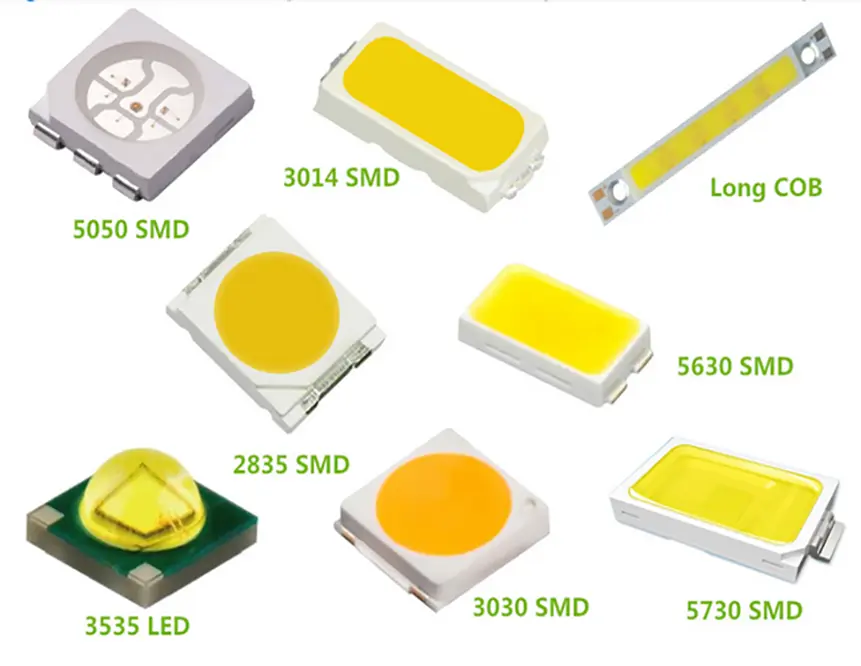
Exploring the diversity within LED packages, we delve into the intricate world of semiconductor technology, where precision melds with performance. Various package types have been developed to suit a range of applications and environments, each with its unique characteristics that may include different forms of heat dissipation, light distribution, and physical integration. Such variety ensures that LED technologies remain at the forefront of versatility, meeting the needs of an array of projects that demand differing lighting solutions.
In discussing types of LED packages, it’s imperative to recognize categories like Surface-Mount Device (SMD), Chip-on-Board (COB), and Multiple-Chip-on-Board (MCOB), among others. These classifications reflect not only the assembly method but also the thermal and optical performance characteristics inherent to each type. For example, SMDs offer flexibility in design, whereas COBs are renowned for their high luminous efficacy. The careful selection of LED package type is crucial in optimizing the balance between light quality, energy efficiency, and longevity in accordance with the application’s specific requirements.
Traditional DIP LEDs
The Dual In-Line Package (DIP) LED is an established and once ubiquitous package style.
- Robust Design: Known for their durability and simple through-hole mounting.
- Polarity Awareness: DIP LEDs require correct polarity orientation to function.
- Color Choices: Available in a wide spectrum of colors, including infrared and ultraviolet.
DIP LEDs are identified by their classic ‘bullet’ shape and lengthy leads.
Due to their through-hole design, DIP LEDs are well-suited for prototyping and educational uses.
Compact SMD Options
Surface-Mount Device (SMD) LEDs revolutionize lighting with their miniature scale.
These compact units afford designers a high degree of freedom to create diverse luminaires. With miniaturization at their core, SMD LEDs are favored for their versatility in integrating into various circuit board configurations, enabling slim profiles and innovative shapes. Moreover, these diminutive diodes facilitate high-density LED arrangements, allowing for luminous intensities that sometimes surpass the capabilities of their bulkier predecessors.
Furthermore, SMD options excel in their ease of assembly with automated pick-and-place machines. This precision equipment places SMD components onto circuit boards swiftly and consistently, maximizing production throughput. The mechanical fortitude of the solder joints that secure SMD LEDs to the substrate contributes significantly to the longevity and reliability of the lighting systems.
In terms of performance, SMD LEDs distinguish themselves with their ability to support multi-color configurations within a single package. This characteristic allows for the creation of color-changing and tunable white light solutions that cater to dynamic lighting applications. Advances in phosphor technology and light-diffusing materials enable these compact LEDs to deliver homogeneous illumination, rivaling traditional sources but at a fraction of the size.
Advanced COB Technology
The Chip-on-Board (COB) LED technology represents a significant leap forward, melding numerous LED chips into a single module to create a powerful illumination source. This integration enhances the thermal conductivity, ensuring superior heat dissipation and a longer lifespan compared to other LED counterparts.
COB LEDs are known for their uniform light emission without the spotlight effect. The higher packing density of LEDs in COB modules results in a seamless, smooth beam with minimal glare, ideal for applications requiring wide, diffuse lighting.
Moreover, the small footprint of COB technology allows for an increased flux density, delivering intense brightness from a compact surface. Such efficiency is crucial for designs demanding high lumens without the spatial compromise.
Advancements in COB construction have facilitated the inclusion of various phosphors directly onto the substrate, thereby streamlining the manufacturing process and enhancing the quality of light output. This has opened the door to an array of color temperatures and improved color rendering capabilities.
This COB approach to LED packaging has revolutionized the way designers approach lighting solutions, creating opportunities for the incorporation of high-density, efficient light sources into a diverse range of lighting fixtures. The resulting fixtures maintain a sleek profile while delivering advanced optical performance that meets the demanding standards of contemporary lighting design.
Finally, with its ability to combine high light output with minimal space utilization, COB technology aligns with today’s push for energy-efficient yet powerful lighting solutions. The COB LED’s compact size and high performance specify a bright future for the industry’s evolution.
Selecting LED Packages for Projects
When selecting LED packages for various projects, several critical factors come into play. The application’s innate requirements should guide the decision-making process, dictating the choice of LED package type. These requirements include, but are not limited to, luminous efficacy, thermal management, color consistency, and the directional nature of light. Delving into SMDs might serve applications demanding versatility, while COB packages may be fitting where high-density lighting with a minimal glare is imperative. The final selection should harmonize the LED’s properties with the specific needs of the project to ensure optimal performance, longevity, and visual comfort.
Assessing Electrical and Thermal Needs
When selecting LED packages, a clear understanding of electrical and thermal demands is paramount to avoid premature failure and ensure reliability.
- Current carrying capabilities: Ensuring the LED package can handle the required current.
- Heat dissipation properties: Assessing how effectively the package can distribute heat.
- Thermal resistance: Calculating the thermal resistance from the junction to ambient.
- Ambient operating temperature: Considering the environmental temperature in which the LED will operate.
- Thermal management solutions: Evaluating the need for additional cooling mechanisms.
LED packages must be chosen with an appreciation for their inherent capability to sustain the electrical currents and thermal conditions they will encounter.
Optimal electrical and thermal management leads to extended LED lifespan and consistent light output, safeguarding the integrity of lighting applications.
Form Factor and Aesthetic Consideration
When scrutinizing LED packages, form factor extends beyond basic dimensions; it encapsulates the interplay between design and functionality within a given application.
The selection of an LED package often reflects a balance between practical constraints and aesthetic preferences. Sleek, compact designs may be favored for their modern appearance, whereas larger configurations may afford easier thermal management, hence the premise that form should follow functionality should be applied with discernment. The visible portion of the package can influence the luminous efficacy and distribution, guiding the choice of package for various lighting scenarios.
Moreover, the LED package’s appearance can be a defining element of a fixture’s design. In architectural lighting, the cohesion of a luminaire’s appearance with the surrounding environment is critical, dictating the need for packages that can be seamlessly integrated or, conversely, stand out as distinctive design features.
Ultimately, the form factor of LED packages is a crucial consideration in blending performance demands with design sensibilities. It requires a deft touch to marry sleek, attractive lines with the technical specifications necessary to deliver superior illumination while maintaining the desired ambiance within a space. This balance often distinguishes superior lighting designs, emulating both functional integrity and aesthetic appeal.
FAQs
What is a LED package?
A LED package is a component that houses and protects the light-emitting diode (LED) chip, providing electrical connections and enhancing thermal management to ensure optimal performance and longevity in lighting applications.
Who invented the LED package concept?
The concept of the LED package was developed by Nick Holonyak Jr., a pioneering electrical engineer, in the early 1960s at General Electric.
Are LED packages energy-efficient?
LED packages are highly energy-efficient due to their unique design and technology. Unlike traditional lighting sources, such as incandescent bulbs or fluorescent lamps, LED packages convert a higher percentage of electrical energy into light rather than heat. This enables them to produce the same level of brightness using significantly less power, resulting in lower energy consumption and reduced electricity costs.
The efficiency of LED packages is further enhanced by their ability to produce directional light. Unlike other light sources that emit light in all directions, LEDs emit light in a specific direction, eliminating the need for reflectors or diffusers to redirect the light. This focused light distribution allows for better light utilization and eliminates wasteful scattering of light, making LEDs more efficient in delivering illumination exactly where it is needed.
In addition to their energy efficiency, LED packages also have a longer lifespan compared to traditional lighting technologies. This means that they require fewer replacements, resulting in less waste and reduced maintenance costs. LED packages can last up to 25 times longer than incandescent bulbs and can provide consistent brightness throughout their lifespan.
As energy efficiency continues to be a top priority in the lighting industry, LED packages have emerged as the leading choice for both residential and commercial applications. With advancements in technology and ongoing research, LED packages are becoming even more efficient, providing an environmentally-friendly and cost-effective lighting solution for the future.
Which materials are used in LED packages?
LED packages typically use a variety of materials to ensure optimal performance and durability. One of the key components is the semiconductor chip, which is usually made of Gallium Nitride (GaN) or Indium Gallium Nitride (InGaN). These materials have excellent electron mobility and are commonly used in high-performance LEDs.
In addition to the semiconductor chip, LED packages also contain a phosphor coating. This coating helps convert the blue light emitted by the chip into different colors, such as white or other specific hues. Phosphors are usually made of rare-earth elements, such as cerium, yttrium, and europium.
To protect the sensitive semiconductor chip and other components, LED packages are encapsulated in a material called epoxy resin. Epoxy resin provides electrical insulation, thermal stability, and mechanical protection. It also helps to enhance the light transmission efficiency of the LED package.
Furthermore, LED packages often have metal leads or pads for electrical connections. These leads are typically made of copper or other conductive materials to ensure efficient electricity flow.
Overall, LED packages are designed to combine different materials to achieve high-quality light output, energy efficiency, and long-term reliability in various lighting applications. The careful selection and integration of these materials are crucial for the performance and longevity of LED lighting products.
How to design LED packages?
Designing LED packages involves careful consideration of several factors. First, it’s important to select the appropriate LED chip, which is the core component of the package. The chip determines the efficiency, color temperature, and other characteristics of the LED.
Next, the package design must take into account thermal management. Since LEDs generate heat, it’s vital to ensure proper heat dissipation to prevent overheating and ensure optimal performance. This can be achieved through the use of heat sinks, thermal adhesives, and other cooling techniques.
The optical design is another crucial aspect of LED package design. This involves determining the shape and size of the package, as well as selecting the appropriate lens or reflector to control the direction and spread of light. Optical simulations and evaluations are often performed to optimize the performance and efficiency of the LED package.
Structural design considerations include determining the electrical connections, wire bonding, and encapsulation materials. These elements must be designed to provide reliable electrical connection, protect the LED chip from environmental factors, and ensure durability.
Lastly, it’s important to consider the manufacturing process and cost-effectiveness of the LED package design. The design should be compatible with efficient and scalable production methods, while minimizing material and assembly costs.
In summary, designing LED packages involves choosing the right LED chip, optimizing thermal management and optical design, ensuring reliable electrical connections, and considering the manufacturing process and cost-effectiveness. By carefully considering these factors, designers can create LED packages that deliver optimal performance and efficiency.
What are the different LED packages?
LED packages are the casing or enclosure that houses the light-emitting diode (LED) chip. There are several different LED package types available, each with its own unique characteristics and advantages.
One common LED package is the Through-Hole LED package. These LEDs have two leads that are inserted into holes in a circuit board and soldered in place. Through-Hole LEDs are known for their durability and ease of use, making them popular in applications such as indicator lights and electronic displays.
Another popular LED package is the Surface-Mount Device (SMD) LED package. SMD LEDs are smaller and more compact than Through-Hole LEDs, making them suitable for applications where space is limited. SMD LEDs are typically mounted directly onto the surface of a circuit board using solder.
Ceramic-based LED packages, such as Ceramic Chip-on-Board (COB) LEDs, offer improved thermal management and higher efficiency compared to other package types. These LEDs are designed to minimize heat dissipation and provide better performance in high-power applications.
Another type of LED package is the Chip Scale Package (CSP). CSP LEDs are extremely small, with the LED chip directly mounted onto the substrate without a separate package. This compact design allows for higher packing density and improved light distribution.
Lastly, there are specialized LED packages designed for specific applications, such as high-power LEDs for outdoor lighting or flip-chip LEDs for automotive lighting. These packages are tailored to meet the specific requirements of their intended application, such as higher brightness or better resistance to environmental conditions.
In summary, LED packages come in various types, including Through-Hole, SMD, Ceramic COB, CSP, and specialized packages. Each package type has its own advantages and is suitable for different applications. Understanding the different LED packages is crucial when selecting the right LED for your lighting needs.
What are the common LED package sizes?
There are several common LED package sizes used in lighting applications. These include 2835, 3528, 5050, and 5630. The numbers refer to the dimensions of the LED chip, with 28.35mm x 3.5mm, 50.50mm x 5.00mm, and 56.30mm x 3.00mm being the respective sizes.
Conclusion
In sum, the intricacies of LED packaging are manifold.
From the external facets to the core technology, each aspect plays a pivotal role in tailoring the output to specific applications and design criteria. The choices made here intersect with thermal management, optical performance, and electrical design, which together establish the foundation of any lighting solution. As a focal point of innovation, the progression and refinement of LED packaging continue to advance, responding dynamically to market demands and technological breakthroughs.
Assiduously, understanding the fine details of LED packaging is tantamount to ensuring product success. At the confluence of design, functionality, and longevity, LED packaging encapsulates a myriad of critical decisions. Precision in this realm is non-negotiable for professionals aiming to develop lighting solutions that stand out for their reliability, efficiency, and aesthetic congruence in the intended environment.
The responsibility, then, to make informed selections regarding LED packages relies heavily on continuous education and awareness of advancements within the field. As the industry forges ahead, the adoption of the latest packaging technologies will be imperative. Such progress promises enhancing light quality, energy efficiency, and ultimately end-user satisfaction. Decoding the nuance within LED packaging design will, therefore, remain a cornerstone in the pursuit of lighting excellence.
